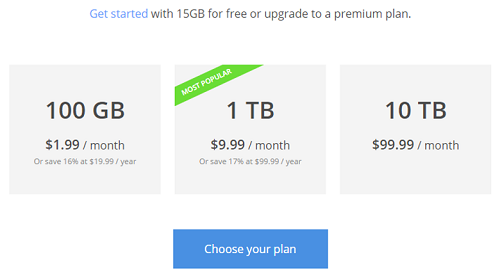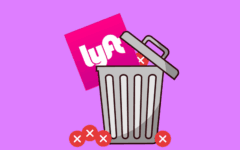
You need an email address to sign up for almost any popular website, app, or online service today. But with so many email clients to choose from, how do you pick the right one? We’re here to help you make that decision by comparing the best email services out there that you don’t have to spend a dime on! In this article, we’ll tell you:
- What you should look for in an email client
- The best 7 free email services available
Let’s get started with what you need to know about your email provider before choosing it; specifically, what features you should be on the lookout for.
7 things you need to consider before choosing your email client
Don’t even think about signing up for an email service if you haven’t discovered what it offers you in terms of the following:
1. Price
Luckily for you, we’re not even going to bother you with email services that aren’t free. Today, your email options are so varied that you definitely don’t need to spend money on them – at least for your personal use. If you manage or operate a business, though, and need an email client to function for hundreds of employees, this might be a different story.
Make sure you find out what the email service offers for free and what it charges money for. Most email services today offer their basic plan for free, and then sell premium monthly or yearly memberships that offer additional storage or other advanced features.
2. Security
Security is a very important consideration, because chances are good that you’re going to be sending and storing thousands of emails with your service. And many of these messages might contain private or sensitive information. Check out what security features each email service offers you for protecting your information. Are your messages encrypted? Do they offer two-step verification? How easy is it to recover a hacked account? Make sure you find the answers to these questions before signing up.
3. Storage
How much storage do you get for free with a service? The answer may surprise you. As we mentioned before, most companies that offer their services for free make money by selling additional paid features. The most common of these is additional storage space.

If you use your email account for anything other than basic personal use, you may very well need an added storage plan. However, some email services like the ones we’ll mention below try to attract customers by offering unlimited storage for free. Make sure you understand what your storage needs are before deciding which email service is best for you.
4. Ease of use
How easy will this email service be to use? Some email clients are unnecessarily complicated, and aren’t that easy to learn how to use. They can have dozens of buttons you need to click, or not enough options to help you do what you want to while you’re in the middle of sending an email. It’s best to choose a provider that is well-established, where you can see that thousands of people use it happily each day. A less-reputable brand is unlikely to have a service that’s very easy to use.
5. Interconnectivity
How well does this email client work with other websites and apps? Some services, like Gmail, have partnerships with popular websites that allow you to use your email profile to sign up for an account at the click of a button. Others are less recognized, and therefore don’t work well with other sites and apps.
6. Intuitive organization
You should definitely look into how well each email service lays out it folders, files, or other organization system. Some offer many more options when compared to other services, but are therefore generally more complicated to use.
If you’re very tech-savvy, you’ll probably want to opt for a service that allows you to sort your emails into categories and sub-categories, add tags and labels, and find your emails with a built-in search engine. If you want something a little less complex, you’ll probably want to opt for a service that lets you organize your emails in a simple, visually-appealing way. That will make it easier for you to access in the future.
7. Multiple platform availability
If you have a few different devices, you’ll probably want to look for an email service that has clients for the web, Android devices, and iOS devices. That way, you can access your emails regardless of what platform you’re using, even on the go. But it’s not just having the extra apps available that’s important! You also need to consider the quality of the apps, as sometimes companies are a bit stingy when it comes to putting care into their app development. If the app for a certain service is poorly-designed or difficult to use on your mobile devices, you might want to consider going with a competitor.
7 free email service providers you’re going to love
1. Gmail

At the top of our list is, unsurprisingly, Gmail. With over 90 million unique active users (and over one billion accounts created), Gmail offers so many great features to its users. Gmail has great labelling and organization systems, plenty of free storage space, and flawless cross-platform capability. Gmail can even literally detect common responses you may want to send in reply to emails that are sent to you, making your life easier than ever.

One thing to caution you about is that, because Google is so popular, its users are targeted with phishing scams more than most other email services. However, if you can find an email service with a spam filter as advanced as Google’s, we’ll be shocked! It’s so good that it’s unlikely you’ll ever see any spam email when using Gmail.
If you want to learn about how to use Gmail in detail, check out our free course with step-by-step tutorials on Gmail.
Platforms: Web | Android | iOS |Chrome
2. Outlook

One of the older and most well-established email services out there, Outlook is a great contender for the best free email service. Outlook has always been (and still is) widely used by businesses, so it has tons of daily active users. Outlook is very organized, easy to use, and full of really great features for connecting with – and managing – your contacts.
Platforms: Web | Windows | Android | iOS
3. Yahoo Mail

Yahoo Mail is another great service that has been around for quite a few years. It has a few notable features that put it ahead of the competition. First, it offers 1 TB (one terabyte, or 1000 GB) of storage with its free account. It also focuses on speedy background operations, making it easy to quickly upload and send messages, high-resolution photos, and even animations. You can also use Yahoo Mail to connect all of your other accounts, including Gmail, AOL, Hotmail, and Outlook. So even if you love another service, you may be able to connect it to a Yahoo Mail account if you like its features better.
Platforms: Web | Android | iOS | Windows | Amazon
4. Mail.com

Mail.com may not offer as user-friendly an interface as some of the other services we’ve mentioned here, but it does have a unique aspect that helps is stand apart: it offers you the choice of over 200 unique domains for your email address. So instead of needing to have your email address end with ‘@mail.com,’ you can choose your own ending. Some of the options they offer include:
- @engineer.com
- @contractor.net
- @musician.org
- @techie.com
- @financier.com
- @accountant.com
- @activist.com
- @journalist.com
- @doctor.com
- @therapist.net
In addition, they offer 2BG of free file storage (outside of your email account), and are available on almost any platform. They even have plug-ins for your favorite Internet browsers, so you can get one-click access to your email account.
Platforms: Web | Android | iOS (iPhone, iPad, and Apple Watch) | Chrome | Firefox | Edge | Safari
5. Zoho

Zoho Mail is an up-and-coming email service that is definitely going to be competing with the big players that we’ve mentioned above. It offers over 25 apps to support your email service, which really helps you customize your experience to exactly what you need. It also has a clean, easy-to-use interface, with drag-and-drop file movement and organization, filters, tabs, mass selection capability, and the ability to create rules to automatically sort your emails. Zoho Mail also offers a complete office suite called Zoho Workplace, with access to Zoho Docs, instant chat, colleague collaboration, and more. It’s a great option if you need a business email.

Platforms: Web | iOS | Android
6. Yandex

Yandex Mail comes to you out of Russia, powered by the versatile Yandex Search (the Russian search engine comparable to Google Search). Yandex offers unlimited free storage, easy search options, scheduled email capabilities, and email reminders. Yandex also has a built-in text translator, which is great if you send a lot of emails to international recipients (say, for work, for example).

Platforms: Web | Android | iOS
7. iCloud Mail

If you have an Apple ID or use Apple products a lot, chances are good that you’re already using iCloud. So while iCloud Mail doesn’t necessarily offer you anything you won’t get with the other services we’ve mentioned, if you’re all about Apple, it might just simply be the most convenient choice for you. It has a simple interface that allows you to send, receive, and organize your emails. iCloud also integrates well with Outlook, so if you enjoy using that product, sign into your Apple ID today and set up an iCloud Mail account.
Platforms: Web | iOS | Android sync
We hope this article helps you with your decision on what email service to use. Choosing an email service can be tough, but luckily, many of them are free to sign up for and use. That means you won’t be losing much if one doesn’t end up working out for you.
In general, we’d recommend focusing on clients that have strong security features, as well as good, intuitive organization systems and easy-to-use interfaces. These are probably the most important factors to consider if you need a new everyday email service.






